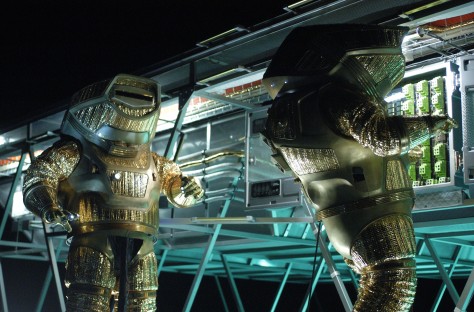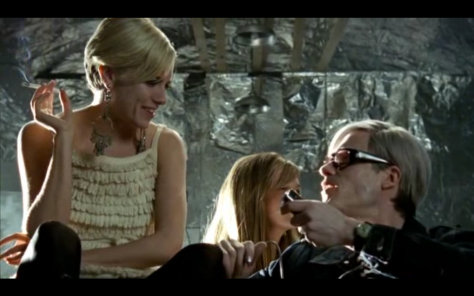By Dennis Hartley
(Originally posted on Digby’s Hullabaloo on May 5, 2007)

This week I’m spotlighting two recent rockumentaries of merit, both available on DVD. First up is The Devil and Daniel Johnston. Iconoclastic musician Daniel Johnston’s life story is a documentary filmmaker’s wet dream-a tragicomic Grimm’s fairy tale version of the American Success Story that plays like a cross between Dig and The Grey Gardens.
Throughout most of the 1980’s, Johnston’s prodigious output of homemade, self-distributed cassette-only albums went largely unnoticed until they were famously championed by Kurt Cobain, who helped make the unsigned artist a household name of sorts in alt/underground music circles.
Johnston has waged a balancing act between musical genius and rampant madness for most of his life (not unlike Brian Wilson, Syd Barrett, Roky Erikson and Joe Meek). The film recounts a series of apocryphal stories about how Johnston, like Chance the Gardener in Being There, stumbles innocently and repeatedly into the right place at the right time, amassing an ever-growing grass roots following.
Everything appears to be set in place for his Big Break, until an ill-advised tryst with hallucinogenic substances sends him (literally) spiraling into complete madness. While on a private plane flight with his piloting father, Johnston has a sudden epiphany that he is Casper the Friendly Ghost, and decides to wrest the controls, causing the plane to crash. Both men walk away relatively unscathed, but Daniel is soon afterwards committed to a mental hospital.
The story becomes even more surreal, as Johnston is finally “discovered” by the major labels, who engage in a bidding war while their potential client is still residing in the laughing house (only in America!). The rest, as they say, is History. The film also delves into Johnston’s childlike, oddly compelling drawings and paintings, which recall the work of the bizarre, posthumously discovered artist Henry Darger (the subject of an equally fascinating documentary called In the Realms of the Unreal). By turns disturbing, darkly humorous, sad, and inspiring, The Devil and Daniel Johnston is a must-see.

The Mayor of the Sunset Strip is another worthwhile rock doc for your consideration. An alternately exhilarating/melancholy portrait of L.A. music scene fixture Rodney Bingenheimer, it was directed by George Hickenlooper, who most recently helmed the Edie Sedgewick biopic, Factory Girl.
The diminutive, skittish and soft-spoken Bingenheimer comes off like Andy Warhol’s west coast doppelganger, or perhaps the Forest Gump of rock and roll. Somehow, he has been able to plant himself squarely in the hurricane’s eye of every major music “scene” since the mid-60’s…from Monkeemania (he worked a brief stint as Davy Jones’ double!) to present-day (becoming the first U.S. radio DJ to break current superstars Coldplay).
While it’s “about” Rodney, the film also serves as a whirlwind time trip through rock music’s evolution, filtered through a coked-out L.A. haze. The ongoing photo montages of Rodney posing with an A-Z roster of (seemingly) every major seminal figure in rock ’n’ roll history recalls Woody Allen’s fictional Alfred Zelig, a nondescript milquetoast who could morph himself to match whomever he was with at the time.
Throughout the course of the film, Rodney himself remains a cipher; in one very telling scene he fidgets nervously and begs Hickenlooper to turn off the camera when the questions get too “close”. There is also a sad irony-despite his ability to attract the company of the rich and famous (and they all appear to adore the man), the fruits of fame and success evade Rodney himself. He drives a an old beater to his DJ gig at L.A.’s legendary KROQ; he lives alone in a tiny, cluttered hovel, where treasured memorabilia like Elvis Presley’s first driver’s license collects dust next to the empty pizza boxes. Which begs the question: Is he a true “impresario”, or a lottery-winning superfan?
The film is peppered with appearances and comments from the likes of music producer Kim Fowley (whose whacked-out music biz career warrants his own documentary), Pamela des Barres (legendary super-groupie and former member of Frank Zappa protégés The GTO’s) and her husband, actor-musician Michael des Barres (who steals the show with some priceless backstage tales). Brilliant!










